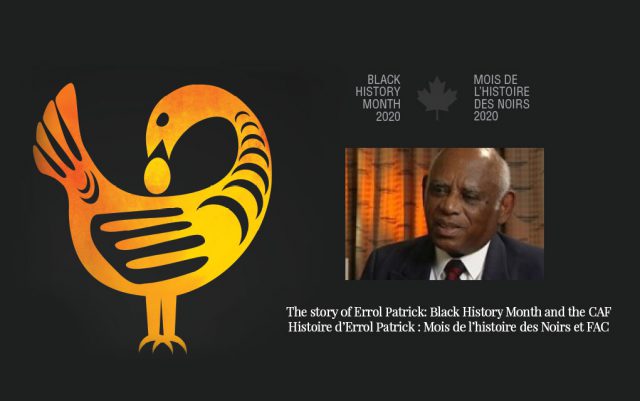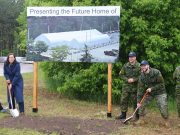
When CWO Patrick (retired) enlisted in the Canadian Military, it was the 1950s, at the start of the Korean War. Although he and his friends did not know where Korea was located, they decided, “let’s join, let’s go and see.”
The young men planned to return to Canada after three years overseas, get out of the military and attend university.
“In the early days, blacks weren’t supposed to join the military. You know, it was a white man’s war,” commented Patrick.
Patrick’s father was against his decision to join the Royal Canadian Horse Artillery (RCHA) and the rambunctious ‘soldiers’ lifestyle’ as a whole. He “saw how [they] acted, drinking and carousing,” and thought they were lazy.
Much of Patrick’s motivation to succeed in the Canadian Military was fueled by his father’s disapproval.
“I had to prove to him that I could join, that I could do well for myself.”
After service in Korea, Patrick continued his military career. He travelled to Germany in 1957 with the No. 1 RCHA and spent eight years working as an instructor with the Battery Command Post. Patrick married during this time, and the couple had three children.
In 1966, Patrick was promoted to staff sergeant, where he took responsibility of commanding the troops. He later returned to Canada, where he earned the rank of CWO while stationed at CFB Petawawa. At the end of his career, Patrick held the position of CWO of Artillery at CFB Gagetown.
CWO Patrick retired from the CAF after 35 years of service to our nation.
L’Adjuc Patrick (retraité) s’est engagé dans l’Armée canadienne dans les années 1950, au début de la guerre de Corée. Même si ses amis et lui ne savaient pas où se trouvait la Corée, ils ont décidé « Engageons-nous et allons voir ».
Les jeunes hommes prévoyaient de rentrer au Canada après trois ans à l’étranger, de quitter l’Armée et de fréquenter l’université.
« Au début, les Noirs n’étaient pas censés s’engager dans l’Armée. C’était une guerre de Blancs », commente M. Patrick.
Le père de Patrick était contre sa décision de s’engager dans le Royal Canadian Horse Artillery (RCHA) et contre le style de vie turbulent des soldats en général. Il « avait vu comment [ils] se comportaient, en buvant et en se chamaillant », et il pensait qu’ils étaient paresseux.
La motivation de Patrick pour sa réussite dans l’Armée canadienne reposait en grande partie sur la désapprobation de son père.
« Je devais lui prouver que je pouvais m’engager, que je pouvais me débrouiller seul. »
Après son service en Corée, Patrick a poursuivi sa carrière militaire. Il s’est rendu en Allemagne en 1957 avec le N° 1 RCHA et a passé huit ans à travailler comme instructeur au poste de commandement de batterie. Patrick s’est marié pendant cette période, et le couple a eu trois enfants.
En 1966, Patrick est promu sergent d’état-major, où il prend la responsabilité du commandement des troupes. Il est ensuite rentré au Canada, où il a obtenu le grade d’Adjuc alors qu’il était en poste à la BFC Petawawa. À la fin de sa carrière, Patrick occupait le poste d’Adjuc d’artillerie à la BFC Gagetown.
L’Adjuc Patrick a pris sa retraite des FAC après 35 ans de service pour notre pays.
By/par: Zoe Côté










